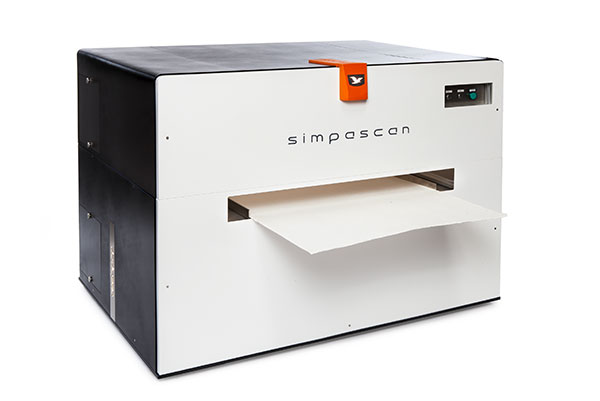Simpascan Dirt Laboratory Analyzer

DIRTY LABORATORY ANALYZER FOR LARGE SIZED PAPER SAMPLES AND PULP SHEETS
> Quick analysis of dirt in pulp and paper large sheets
> Accurate dirt counting on :
> Powerful led illumination system
> Performs digital scan of individual pulp or paper sheets either by reflected light or by transmission according to ISO standards
> Detects any contrasting impurities such as shives, metal, plastic, grease, sand, etc
> Sorts detected impurities as black dots, gray dots and shives according to its color and shape
> Calibration of the measuring system according to the EFPG standard (CEN/TC 172).
USER FRIENDLY SOFTWARE
> Runs on standard controlling PC with Windows OS
> Measurement window
> Configuration window
-
11 configurable classes for size and contrast
-
Different configuration settings may be saved (e.g. ISO 5350, TAPPI T213, T437, T563 for simple change of measuring reference standard)
RELIABLE AND POWERFUL
> High resolution linear camera with 12.288 pixels
> Adjustable according to sheet dimensions, up to 83cm width and no limit for sheet length
> Resolution, pixel size 67μm for max. width (83 cm)
> Analysis time < 1 minute for a 80 x 80 cm sheet
> Repeatable and reproducible
MEETS ALL THE CRITERIA OF MAIN DIRT CALCULATION STANDARDS :
Digital dirt counting for substitution of classical visual analysis requires a set of ISO criteria to avoid fluctuation :
> Sampling management and information about the validity and relevance of the measurement.
> Individual examination of the calculated points must be possible.
> Calibration of the system via the EFPG chart.
> The detection contrast must vary with regard to the area of detected spots.
> The detection contrast must be compared to the local contrast of the spot (1 cm ring around the spot)